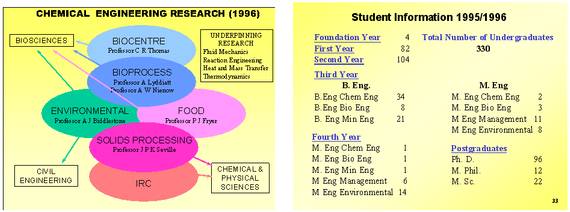Our history
This history of the School of Chemical Engineering at the University of Birmingham is based on the First Keith Taylor Memorial Lecture given on the 10th December 2002 by Professor AJ Biddlestone.
The lecture was titled ‘A Chemical Engineering Odyssey – from Oil Mining to Formulation Engineering’. The author is grateful to Dr K Thayanithy for photographic material.
1900 - 1920
1900 - 1920
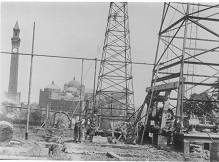
The University of Birmingham was established by the granting of a Charter in May 1900; the first Civic University. The basis of the University was the existing Mason and Queens colleges, Mason for Science and Engineering, Queens for Medicine, Theology and Arts; the two had combined in the early 1890's. To the vision and drive of Mason was added the drive and determination of Joseph Chamberlain, at that time Minister for the Colonies; he had considerable experience of local politics in Birmingham.
The creation of the University of Birmingham was of enormous significance for higher education outside of Oxbridge. The previous model had been a federation of colleges with degree awarding powers vested in a University. Victoria University, chartered in 1880, had constituent colleges; Owens in Manchester, Liverpool college, Yorkshire college in Leeds. London University awarded degrees for study in various colleges. The Charter to Birmingham was a new understanding of University, the federal pattern was overtaken. Within a decade Chamberlain?s Birmingham model became the standard pattern, the ?Civic? model; Liverpool 1901, Leeds 1904, Sheffield 1905, Bristol 1909.
In July 1900, following the May Charter date, Lord Calthorpe offered the new University 25 acres of land on the Bournbrook site of his Edgbaston estate, thus NOT only a new University, a CAMPUS as well.
The University started life at Mason College in the City Centre, Edmund Street, and continued to use those buildings for many years. Site work at Bournbrook began in 1901, departments moved into the radial blocks in 1905, at which time the superstructure of the Great Hall was started. The departments and the courses on offer were essentially transfers from Mason College but there were two innovations,
BREWING and MINING. The 1900 vision was a University which would shape itself on the needs of a manufacturing town and produce graduates fully conscious of conditions of national prosperity. These innovations in practical science were the result of a specific Chamberlain technique of encouraging local companies and industries to sponsor courses in their own area of interest. The British School of Malting and Brewing, later named the School of Brewing and Fermentation, was set up in 1900 with a £28000 grant from the Midland Association of Brewers.
Such innovations were the target of traditionalists. The Pall Mall Gazette described Birmingham as a 'Bread and Butter' University which would produce graduates schooled in 'Tariff and Values'. Punch and the Westminster Gazette presented Brewing at Birmingham as a huge joke. Oxford undergraduates wrote ditties such as
He gets a degree in making jam
At Liverpool and Birmingham
It was no joke, Brewing was a major Midlands industry, Birmingham would produce graduates the industry needed.
Another major industry of the Midlands was Mining. Richard Redmayne was appointed Professor of Mining in 1902 and served until 1908 when he was appointed Chief of the Mining Department at the Home Office, the Chief Inspector of Mines. Whilst at Birmingham he developed the model mine which was completed in 1905; the slope of the land on the South side of the campus enabled construction of a mile of mine galleries with different levels and roads; there was instruction in coal winning, ventilation and surveying. Birmingham mining graduates were exempt from the statutory requirement for extra training in underground colliery management. Birmingham was producing graduates the industry needed.
Redmayne's replacement was John Cadman, a serving Government Inspector of Mines, appointed as the Professor of Mining at the age of 31. He held the Chair from 1908 to 1922.
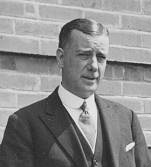
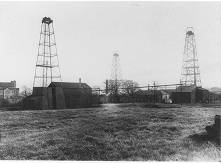
VERY significantly for Chemical Engineering Cadman's interests included the Mining of OIL. There are many 'oil' connections identifying this:
- from 1911 students entered the Mining department to study oil mining alongside coal mining
- oilfield drilling rigs ordered in 1912 [installation site was between the current Chemical Engineering buildings and the University station]
- first drilling instructor appointed 1913
- Cadman appointed member of expert commission sent to assess the Persian oil fields in 1913
- 1916 Cadman appointed Chairman of the Inter-Allied Petroleum Council
- 1917 Cadman appointed Director of His Majesty's Petroleum Executive [reporting directly to Lloyd George's War Cabinet]
- 1920 Cadman stood down as Dean on appointment as Adviser to the Cabinet on questions affecting Coal and Petroleum
The commission to the Persian oil fields in 1913 is most interesting. The key members were Rear-Admiral Sir Edward Slade and John Cadman, Professor of Mining at Birmingham University and Petroleum adviser to the Colonial Office. The background factors to that visit were:
- the Navy experimented with oil as a fuel from 1898 and had some oil fired ships
- the Anglo-Persian oil company was launched in 1909 following the discovery of the Persian oilfield
- Winston Churchill was appointed First Lord of the Admiralty in 1911, he was a convert to oil as the fuel for Navy ships
- in 1912 Anglo-Persian was in need of new finance and approached Churchill and the Navy
- 1913 the commission was sent out, reported in April 1914 and 6 weeks later two agreements were signed
These agreements were:
- £2million Government capital to Anglo-Persian in return for a majority shareholding
- contract for 40 million barrels of fuel oil to the Admiralty over 20 years
There can be no doubt as to the link between Birmingham and the oil industry at that time.
1920 - 1940
1920 - 1940
The University continued to call for closer links between Science and Industry but there were funding problems. An appeal was launched in 1920 and significant sums were forthcoming for specific causes; petroleum and oil refining was a major recipient.
Donations to 'Oil' were £25000 from Anglo-Persian, £25000 from Anglo-Saxon, £10,000 from Anglo-American and £25000 from other sources. Thus a total of £85000 in the early 1920's provided the basis on which a Centre for Research into Oil Engineering and Refining could be established.
Cadman was appointed Technical Adviser to Anglo-Persian in 1921and left the University [he was appointed Chairman in 1927]. At the same time the Mining Department was divided to form two separate departments of Mining and Petroleum Engineering. RR Thompson was appointed as the first Professor of Oil Engineering and Refining followed a year later by AW Nash. Nash held the chair until 1942.
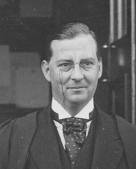
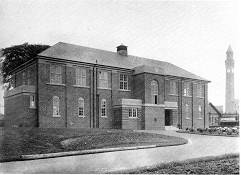
In 1926, Sir John Cadman visited the University to open the separate building for the Department of Oil Engineering and Refining. He was Chairman of an advisory group to the department and had obviously been involved in the fund raising and creation of the new 'home'.
The undergraduate timetable was 35 hours per week. The department constantly sought scholarship support for its students. The following is an extract from a 1926 letter written by Nash to various oil companies;
'This department was liberally endowed by several of the larger oil companies in the British and American oil industries as a result of an appeal by my predecessor Sir John Cadman. We are the best equipped in the world to give undergraduates a specialised training in the fundamental principles which underlie the various sciences incorporated in Petroleum Technology, this is shown by the success of our graduates and the demand for our graduates from the industry. The coal owners of Great Britain have granted my colleague the Professor of Coal Mining 30 scholarships a year to the value of £60 each. I am anxious to establish a similar fund on a smaller scale of 8 scholarships valued at £60 per year tenable for 3 years'
Practical drilling work was an integral part of the undergraduate programme. The 1926-1928 biannual report from the Department states the students had only reached a depth of 850 ft with the drilling rigs as they had spent the summer vacation working in the Polish and Rumanian oilfields. The next summer students will work on all three of the Birmingham rigs and air lift pumping experiments will be carried out when a depth of 1000 ft is reached.
In the early days of the Department the emphasis was mainly on Oil production and it was frequently referred to as the Oil Mining Department. However, from 1924 onwards, with the rapid increase in the petroleum refining industry, an industry very closely associated with the development of chemical engineering principles, attention was concentrated more and more on the "chemical engineering" activities; driven by industry's increasing demands for personnel.
Birmingham was producing the graduates the industry needed. The activities of the department at this time is identified in the 1926-1928 biannual report written by Nash. There were 5 academic members of staff, 14 first degree graduates [BSc Oil Engineering and Refining] and 2 PhD students. The research areas were; hydrogenation of bituminous substances; synthetic fuels from water gas; decomposition of methane; vapour phase oxidation; cracking and unsaturates in gasoline.
The building was extended in 1930 with a single storey laboratory. Later in the 30's three outside bays were built to provide a workshop and additional experimental facilities.
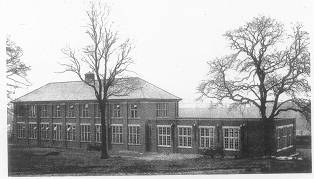
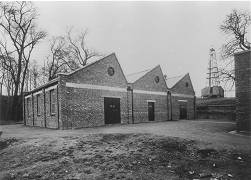
Research work on clearly identifiable 'Chemical Engineering Research' dates from 1930. Fallah and Hunter established the main principles of the solvent refining process. Mayo and Hunter produced a much quoted paper on the wetted surface in ring packed towers.
1940 - 1960
1940 - 1960
Professor Nash died in 1942 and was succeeded by F.H.Garner.
FH Garner graduated in 1915 in Chemistry at Birmingham. At the conclusion of the 1914/18 war he undertook postgraduate studies at the University of Pittsburgh and the Mellon Institute of Industrial Research. He obtained a PhD in 1921 and returned to England to take up post as Chief Chemist to the Atlantic Gulf and West Indies Oil Co. Ltd [AGWI] at Fawley. In 1928 he was appointed Chief Chemist of the Anglo-American Oil Company, with responsibility for research and for operation of the various Installation Control Laboratories in the Anglo-American and associated companies in the UK. In 1935 he was associated with the formation of the Esso European Laboratories set up by Standard Oil [New Jersey] as the research and technical advisory organisation in Europe. Garner moved from his position as Chief Chemist of Anglo-American to be Head of Esso European Laboratories, a position he held until he moved to Birmingham in 1942.
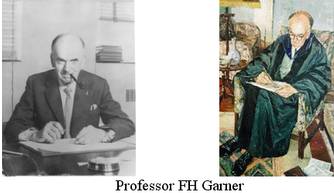
Thus Garner was at Fawley from the beginning of its development. He was closely associated with the building of the Lodge-Tinkler cracking plant [a process developed by Sir Oliver Lodge and Dr Frank Tinkler at the University of Birmingham]. He installed in 1923 one of the first knock rating machines in the country. He obtained first hand experience of 'Chemical Engineering' and became increasingly interested in training students to enter the industry.
The activity of the University during 1939-45 was less affected by the war than was the case in 1914-18, when the site was requisitioned. During 1939-45 the department was largely engaged on petroleum warfare problems, particularly in connection with flame throwers. This work had a fundamental background in that it was concerned with the problems of non-Newtonian fluids of relatively high viscosities, an understanding of which was needed for the transfer, pumping and mixing of viscous materials. The burners for the FIDO [Fog Investigation and Dispersal Operation] system of fog dispersion for airfields was developed in the Department. It was during this period that the oil rigs were removed. [change of interests from oil winning to refining, possibly in relation to the recycling of metal during the second world war]
Immediately after the war, in 1946, the Department of Chemical Engineering was formally established by merging together the Oil Engineering department and the Coal Utilisation section of mining, the downstream processing work of the Mining department. FH Garner was appointed Head [Director] of the new Department of Chemical Engineering. The undergraduate programme was re-titled chemical engineering but was essentially a continuation of the oil programme. The main research areas were distillation, mixing, combustion of liquid fuels, synthesis and properties of hydrocarbons.
At the end of the 1940's considerable extensions were made to the outside bays. The three bays were doubled in length and a fourth bay was added. The extension to one of the bays was built with additional height to accommodate distillation columns up to 30 ft in height. Undergraduate experiments were installed; double effect evaporator, refrigeration unit, air cooling tower, jacketed pans and mixers, filtration units, driers, liquid extraction, heat exchangers. The distillation bay had two galleries for access to the columns.
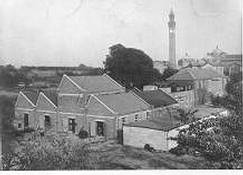
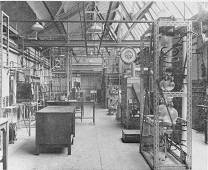
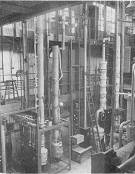
The 50's was a period of laying the basis for considerable expansion of facilities. Undergraduate entry numbers rose from 5 in 42/43 to 50 by 1950 to 85 in 1960. The profile of the Department in 1956 identifies that there were 16 academic staff [6 in 1946, 21 in 1958]; 55 first degree graduates [50 BSc Chemical Engineering, 5 BSc Petroleum Engineering] and 8 PhD graduates. The research areas were vapour/liquid equilibria, distillation column operation, diffusion in and around droplets, combustion, gas absorption, high pressure PVT data, optical and thermodynamic properties of hydrocarbons and crystallisation. November 1953 was the date when excavations commenced for a much larger new building. [October 1955 was when the author arrived as an undergraduate]
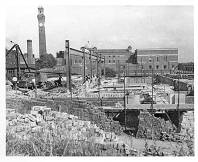
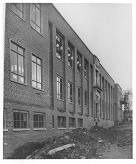
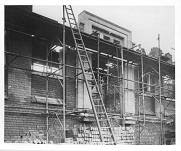
A very significant appointment was made in 1956; an academic post to specifically develop 'biological engineering' [ the terminology at the time, to become biochemical engineering ]. It was a far seeing initiative recognising the potential growth in industrial biological processes and the need for graduates for those industries. The two main areas of focus at that time were
- The development of aerobic biological processes for the production of antibiotics, vitamins, steroids
- A vast increase in food processing
The large scale production of penicillin grown in suspension in a liquid medium in a stirred, sparged, fermenter reactor had clearly identified the need for'chemical engineering' expertise for biological processes (microbial kinetics as opposed to chemical kinetics).
The Department at Birmingham recognised the importance and potential of chemical engineering for 'biological' processes and the 1956 appointment of Norman Blakebrough was the start of a major activity within Birmingham Chemical Engineering. The 'Bio' building was part of the new build of the late 50's [ the building to the side of the main building above the outside bays ]. This separate block was designated originally as a new pilot plant for chemical engineering but reassigned in connection with Blakebrough's appointment; a key feature was the fermenter hall. An MSc in Chemical Engineering in Biological Engineering commenced autumn 1958, producing its first graduates in 1959.
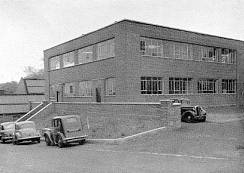
1960 - 1980
1960 - 1980
F.H. Garner retired in 1961; in his 19 years as Head the Department evolved from Oil Engineering and Refining to Chemical Engineering, there was tenfold expansion in facilities, student numbers increased and Biological /Biochemical Engineering was introduced. He was succeeded by John Davies, who came to Birmingham from Cambridge.

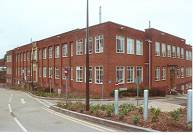
Professor JT Davies and the Chemical Engineering Building
The 60’s and 70’s was a period of sustained activity in the greatly expanded facilities, which included the first stage of a new pilot plant with 40ft height clearance (stage 2 was never built).
The new main building has several interesting features. The panelling in the entrance is walnut, the lecture theatre and library are oak.
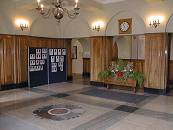
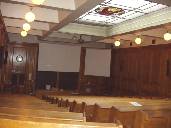
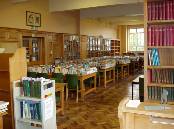
The mosaic set in the floor of the main entrance hall comprises
- A centre of fire like red marble showing atomic orbitals, surrounded by a white collar symbolising refrigeration; together representing energy
- Four surrounding circles of marble selected to resemble coal, air, water and oil bearing strata
- Inset between the marble are pieces of copper, stainless steel, aluminium and plastic; representing materials of construction
- The multi-coloured pieces of marble completing the design represent inorganic raw materials


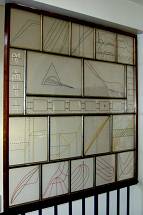
At the head of the NE staircase there is an ornamental screen of standard plant flowsheeting symbols and at the head of the SW staircase a screen of chemical engineering diagrams. Garners’ interests in ‘drops’ is recorded by the various drop shapes engraved in the windows of the main staircases. Alchemical symbols are to be found in the hand rail of the entrance steps [and on the floor of the 1926 building].
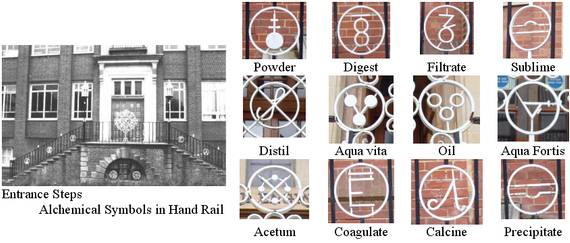
Prior to this period there had been two professors in the department;
FH Garner as Head and a second chair held for a time by Frank Morton before his move to UMIST. Steve Ellis replaced Morton and a third professor was appointed so that during the 60’s/70’s there were Davies as Head with Ellis and Philip Garner, within a total academic staff of around 30. [ The author was appointed in 1965 ] In any one year there were 350 students in total in the department including 15 – 20 postgraduate taught and 50 – 60 PhD students. Undergraduate entry ranged from 80 to 110. The programmes on offer were BSc Chemical Engineering, BSc Petroleum Production, MSc Biological Engineering and a Diploma in Chemical Engineering [a conversion course for non chemical engineers ]
In 1960 there were 5 BSc graduates in petroleum production compared to 65 BSc chemical engineers. The ‘oil’ degree, the origins of the department, had been in decline and the final demise followed the departure of the lead member of staff to Imperial College.
The research activity was essentially determined by the specific interests of individual staff working alone or in combination as they chose; the requirements of Research Assessment Exercises were yet to come. The main areas included:
- Interfacial phenomena
- Vapour liquid equilibrium
- Distillation column design and operation
- Supercritical gas extraction
- Reverse osmosis and adsorption
- Rheology
- Applied catalysis
- Heat transfer and fouling
- Biochemical / Biotechnology
The Biochemical /Biotechnology activities grew during this period as the petroleum production activity declined. There were some 20 projects in progress within ‘Bio’ including fermentation studies, cell wall strength, in-vitro culture production of monoclonal antibodies and a range of biological treatment systems for organic waste matter and wastewaters.
The teaching was very strongly related to the research activity.
In this period the department continued to produce graduates, in numbers not previously reached, that a wide range of industries and organisations needed. The end of the 70’s brought the retirement of two of the professors, Steve Ellis and Philip Garner.
1980 - 2000
1980 - 2000
The period from 1980 onwards provides a stark contrast to the relative stability of the previous 20 years. Huge expansion for the University, dramatic change in operational structures, intensive audit of teaching and research. Key features include;
- The retirement of Professors Steve Ellis and Philip Garner brought John Bridgwater and Alvin Nienow to Chairs at Birmingham. These appointments provided major impetus to the research activities
- John Davies retired from the Headship in 1983 and was succeeded by John Bridgwater
- The Department of Minerals Engineering merged with Chemical Engineering in 1984. [Mining had become Minerals Engineering in 1966]
- A rolling grant from SERC [Science and Engineering Research Council], first stage £1.6 million over 4 years, was awarded in 1987 to establish a national Centre for Biochemical Engineering at Birmingham. The University and the UGC both provided £600,000 each for expansion and renovation of the existing 'Bio' building, completed 1988. The review and roll-on of the grant ended in 2000 by which time some £7 million had been awarded to the Biochemical Engineering

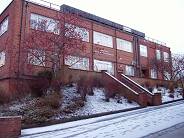
The new 'Bio centre' was enhanced by the establishment of the RTZ Chair of Biochemical Engineering; this was subsequently taken up by Professor Nienow.
In 1988 the University introduced devolved budget centres as a major change in the operational structure; Department of Chemical Engineering became the School of Chemical Engineering. Heads of School became fixed term management appointments.
Introduction of SARTOR, Standards and Routes to Registration [Engineering Council], brought BEng [3 year] and MEng [4 year ] programmes; Birmingham chose the bifurcated system with selection for MEng at the end of second year. In parallel specialist versions of the chemical engineering degree were introduced; specialisms were Biochemical Engineering, Environmental Management and Minerals Engineering. These specialisms directly relate to research strengths
John Bridgwater departs Birmingham in 1990 to become Head of Chemical Engineering at Cambridge. Professor Noel Warner is appointed Head of School [he was previously Head of Minerals Engineering until the merger]. Professor Joe Biddlestone succeeds Professor Warner as Head of School
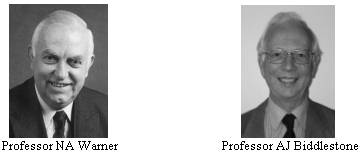
Jonathan Seville and Peter Fryer were appointed to Chairs at Birmingham 1994.
The Research Assessment Exercise [RAE] was introduced. The progression of Birmingham Chemical Engineering across the 3 exercises to date has been a rating of 4 in 1992, 5C in 1996 and 6* in 2001. [ Diagram shows research activity structure as presented for the 1996 RAE; the Table shows student numbers for the academic session1995/96 ]
In the period from 1996 to 2001 the research activity within the School became organised within a single research centre, the Centre for Formulation Engineering. The 6* rating for the Centre places Birmingham as 1 of only 3 Chemical Engineering departments to achieve this highest possible rating. The research areas within the Centre in 1996 were; Food Processing ; Solids Processing/Minerals Processing ; Catalysis and Reaction Engineering ; Environmental Engineering ; Bioprocess Engineering
In 1998 Professor Biddlestone relinquished the Headship upon appointment as Dean of Engineering; Jonathan Seville was appointed as Head of School.
2000 - 2008
2000 - 2008
Modern Chemical Engineering is increasingly concerned with the development of high-value products which are sold by the 'effect', examples are drugs and foods. There is a need to deliver the right molecule to the right place at the right time, clever structuring of the product is needed. Birmingham has become internationally known for its work on product formulation - 'Formulation Engineering'. In recognition of past performance and plans for the future the School successfully bid into the Joint Infrastructure Fund [JIF] to obtain £3.3 million of funding for building modernisation and new equipment. It provided a new inside to the existing buildings with an atrium between the buildings.

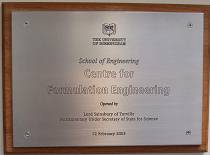
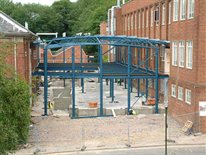
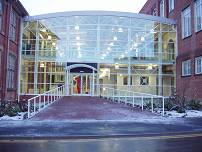
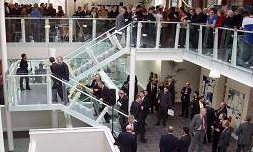
A further organisational change came into effect from October 2001 with the introduction of a single School of Engineering. A Department of Chemical Engineering continues on in the new School with the Centre for Formulation Engineering being 1 of 9 research centres within the School. The new arrangement considerably assists cross discipline research activity.
Research continued within Formulation Engineering structured into four industry themes; Speciality Products; Food, Health and Nutrition; Bio Industries; and Energy and Chemical Industries. In addition to conventional PhD provision, PhD with integrated study, Engineering Doctorate [EngD] in Formulation Engineering and MRes in Chemical Engineering Science degrees are offered. There is a taught MSc in Biochemical Engineering and a Postgraduate Diploma/MSc in Food Safety, Hygiene and Management.

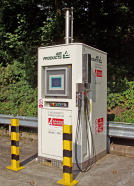
Hydrogen fuel cell car and fuel pump
The undergraduate programme provision evolved to offer BEng/MEng Chemical Engineering, MEng Chemical Engineering [International Study], MEng Chemical Engineering [Industrial Experience], BEng/MEng Chemical and Energy Engineering and BEng/MEng Chemical Engineering with Business Management. Undergraduate entry numbers have been increasing again since 2000 reaching 106 in September 2008.

The single School of Engineering arrangement continued to operate until a university wide re-organisation, effective from August 2008, introduced a five college structure which includes a College of Engineering and Physical Sciences. The Department of Chemical Engineering becomes a School again, one of nine schools within the College.
Jonathan Seville departed Birmingham in 2008 to become Dean of Engineering at Warwick. Professor Peter Fryer was appointed Head of School.
Epilogue
Epilogue
A journey of over 100 years since the first Professor of Mining was appointed. The journey tells a story of success, of the vision, drive and determination of individuals and groups of individuals. A story of a Department consistently producing graduates for a range of employers. The success of those graduates is identified through their activities in numerous national and international ‘chemical engineering’ companies, government agencies and Universities worldwide.
The University of Birmingham recognises outstanding careers through the award of Honorary degrees. The list of recipients of DSc/DEng awards since 1980 includes the following Birmingham Chemical Engineering graduates:
A.W. Forster, JRS Morris, AW Pearce, JDDR Salvador Pinheiro, AC Barrell, R Hu Tsu Tan, KH Taylor, JH Robinson, WRK Innes, WD Lowe, S Vranch.
The University introduced a new honorary designation of ‘Foundation Fellow’ in 2005 and Professor Joe Biddlestone, also a Birmingham Chemical Engineering graduate, was installed as an inaugural Foundation Fellow.
Many Birmingham Chemical Engineers have contributed to the activities of the discipline professional body, The Institution of Chemical Engineers, including the following who have served as President of the Institution:
JRS Morris, GA Lee, AW Forster, AC Barrell, KH Taylor, JH Robinson, S Vranch.
A Chemical Engineering Odyssey - from Oil Mining to Formulation Engineering - an amazing journey. The Journey has been made possible by a succession of Heads of Chemical Engineering (PDF 100KB).
Best wishes to all Birmingham Chemical Engineering Graduates, past, present and future.

Joe Biddlestone
Emeritus Professor of Chemical Engineering
February 2006
